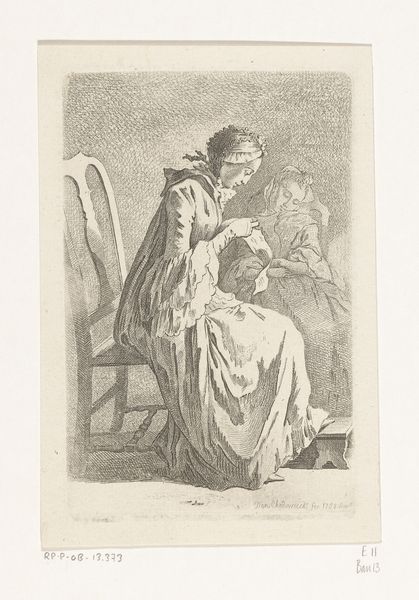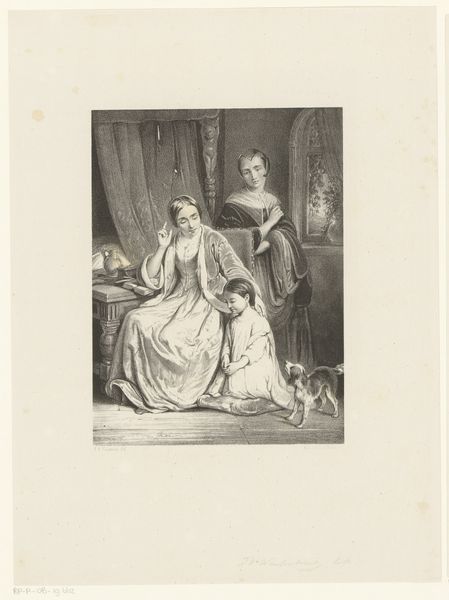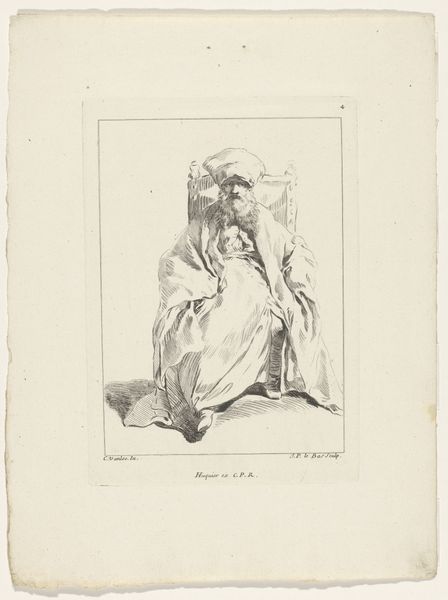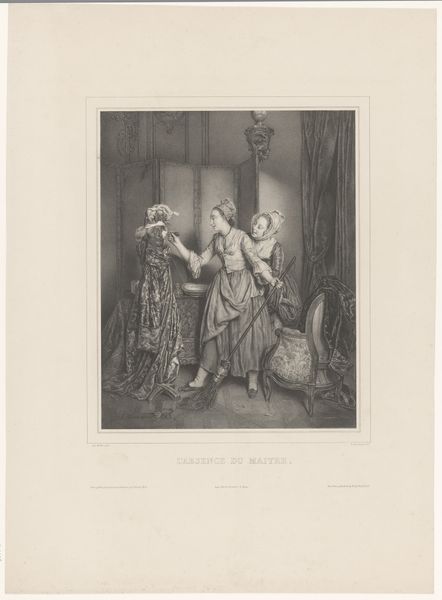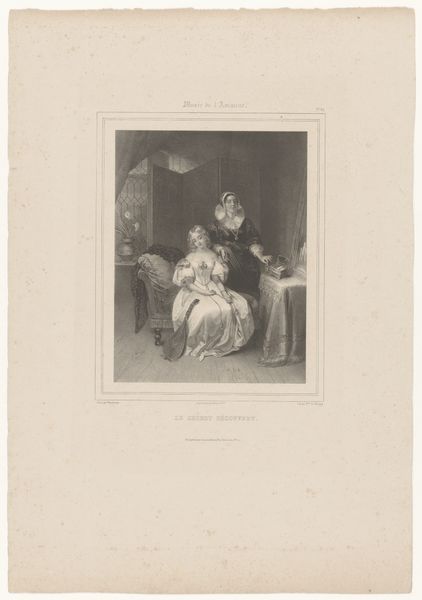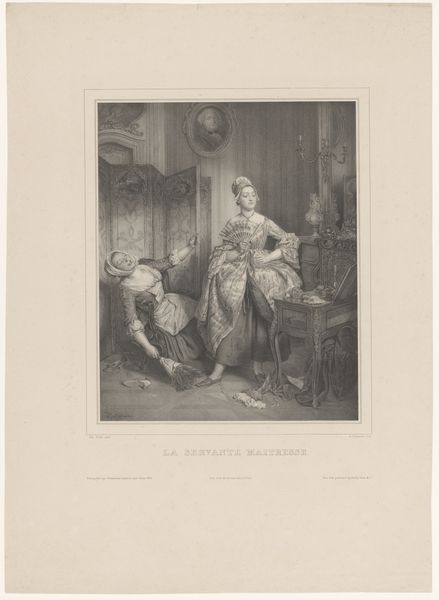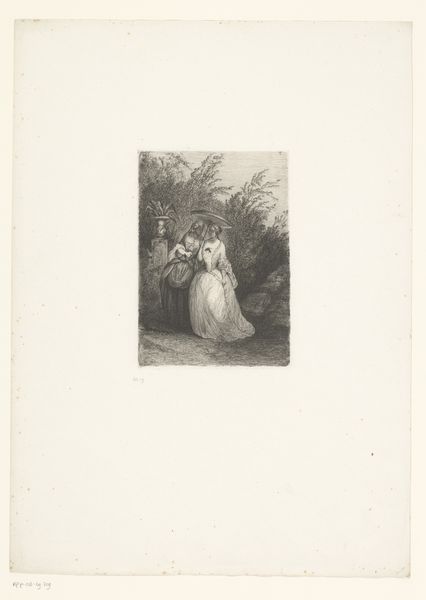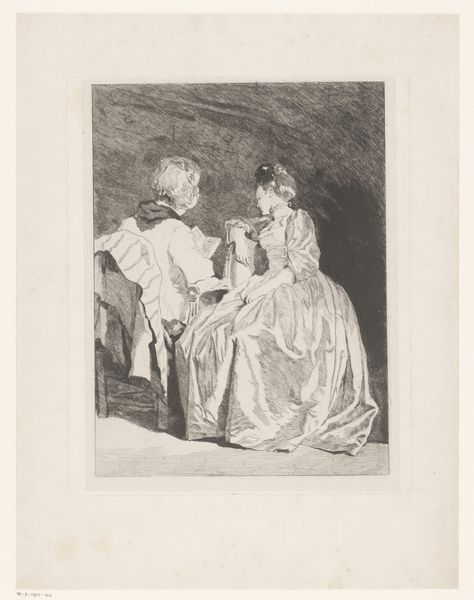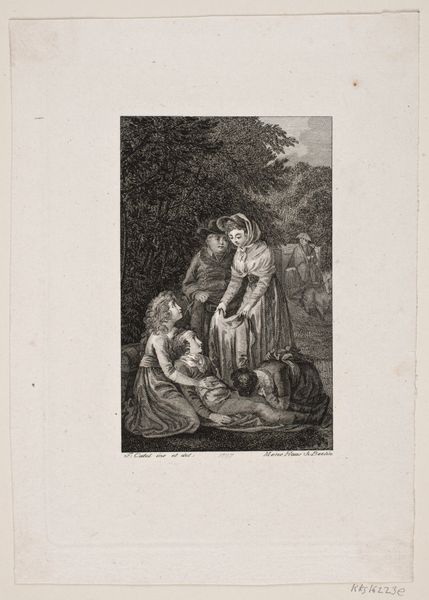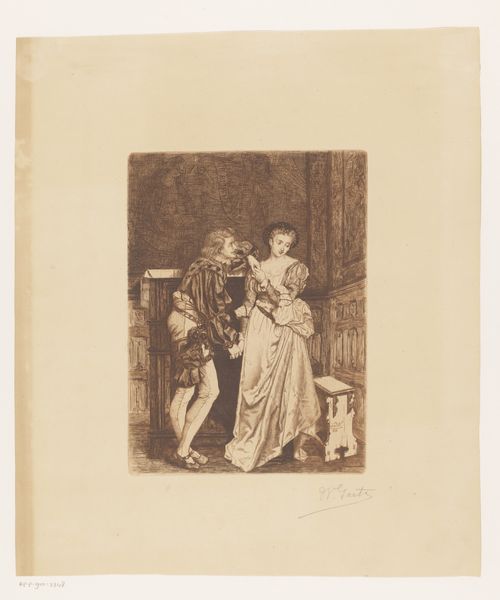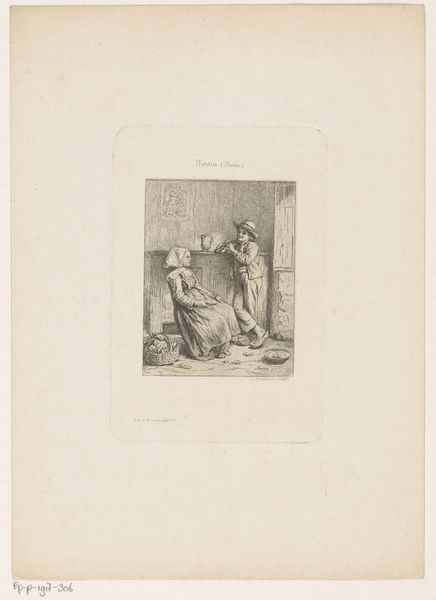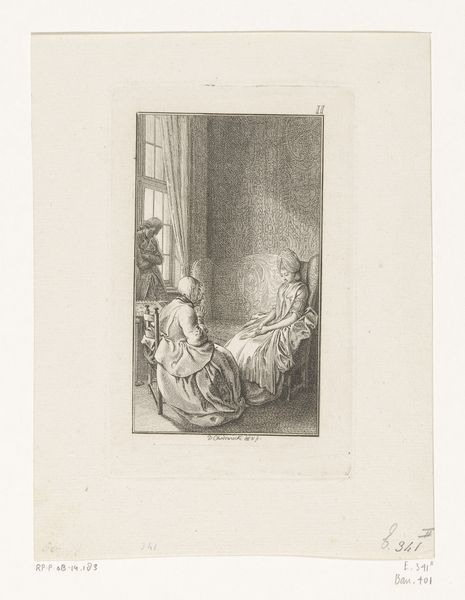
Manon Lescaut en Chevalier des Grieux bij de verkoper van tweedehands kleding 1875
0:00
0:00
Dimensions: height 150 mm, width 107 mm
Copyright: Rijks Museum: Open Domain
This is an etching by Léopold Flameng, made in the 19th century. The printmaking process has a long history, and was traditionally viewed as a craft. Flameng used line etching, a technique that requires skill and precision. The image shows figures negotiating with a seller of used clothing, captured in a flurry of cross-hatching. The material quality of the print – the stark contrast of black ink on paper – gives the scene its dramatic intensity. Look at the way that Flameng has used varied line weights to create a sense of depth and texture. The etched lines suggest the details of the clothing and the expressions on the figures' faces, creating a contrast between the elegance of the characters and the scene's economic reality. Prints like this one played a key role in disseminating images and stories. They were also subject to the economics of art production. By considering its material and process, we can appreciate how printmaking democratized art, and also generated employment. It's a clear example of how considering materials and making broadens our understanding of art history.
Comments
No comments
Be the first to comment and join the conversation on the ultimate creative platform.
